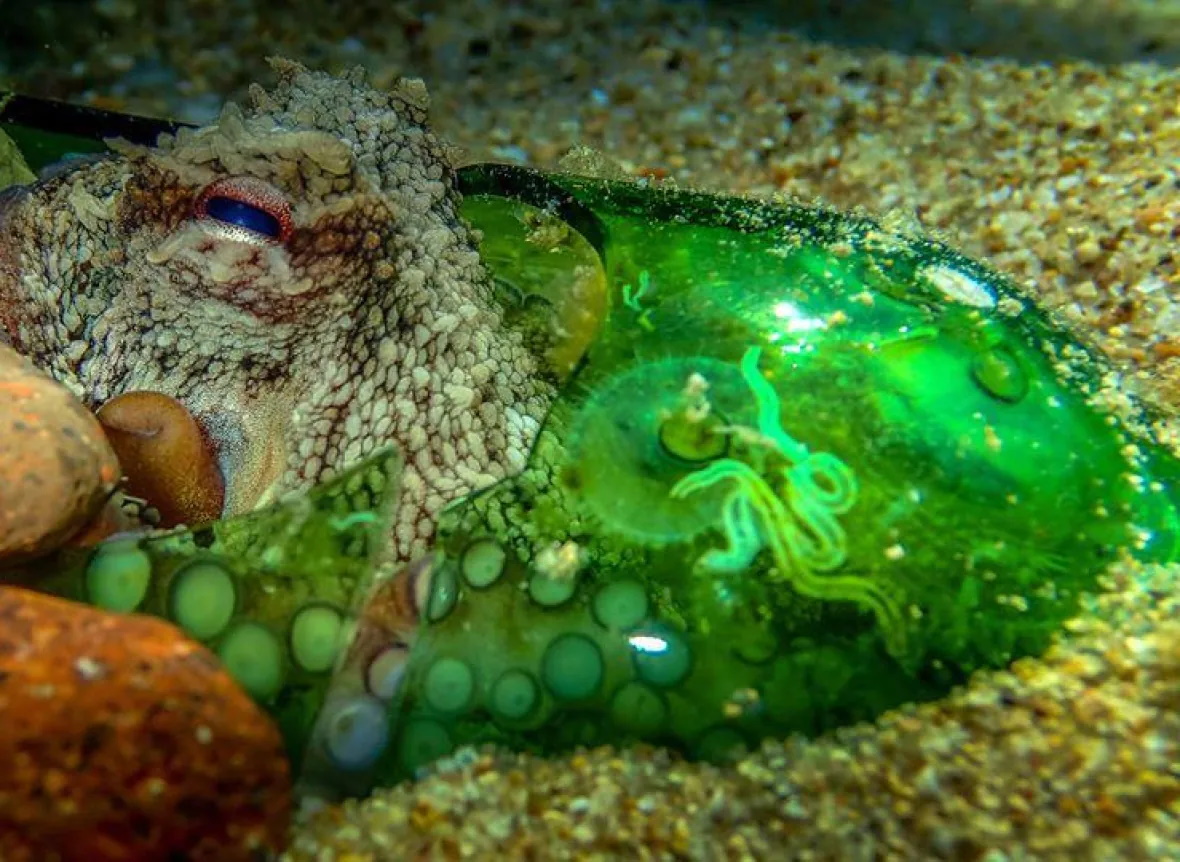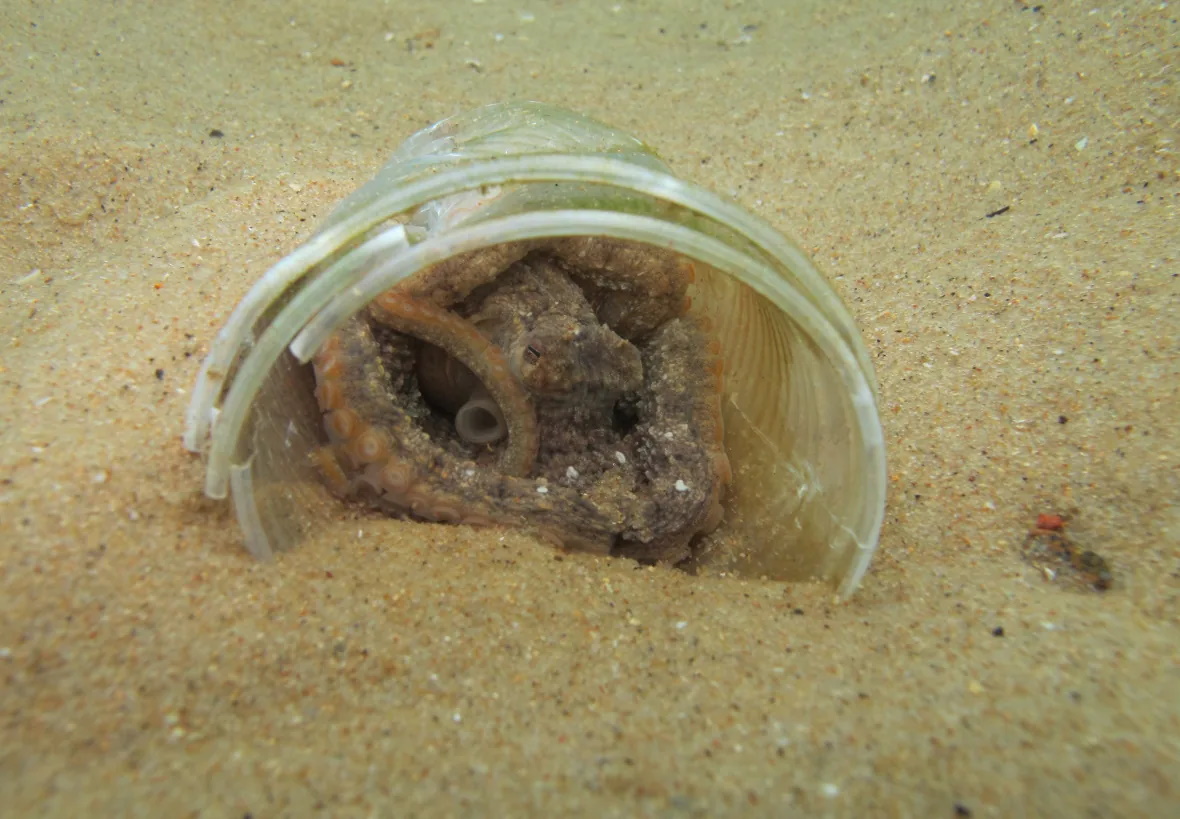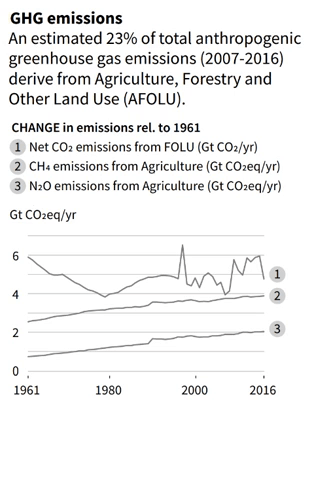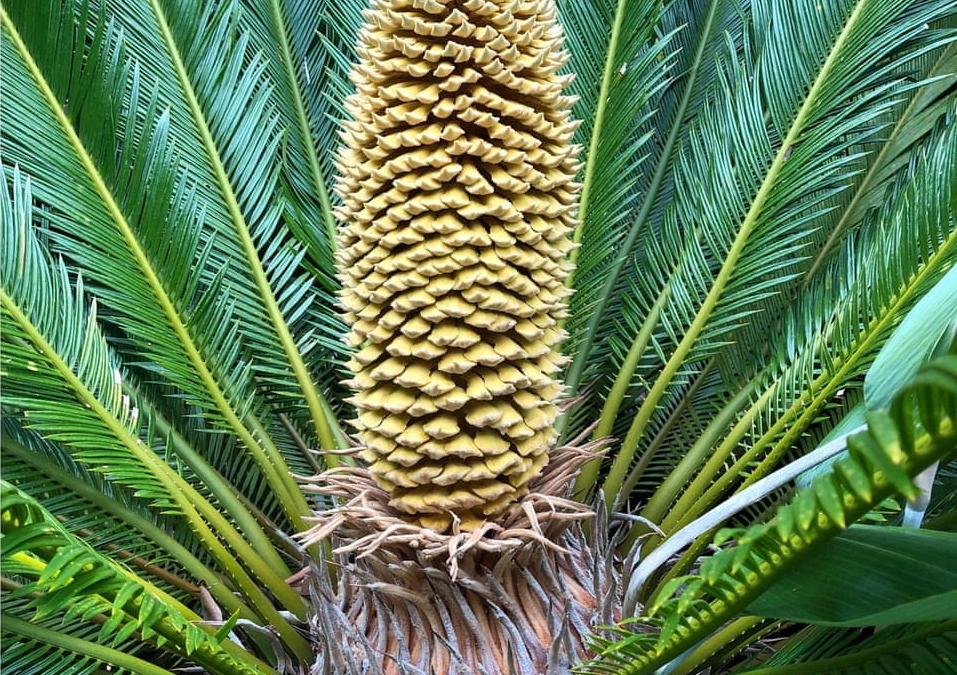Octopuses are using human garbage as shelter, camouflage and more, study finds – “It’s becoming so common that they’re using these items to protect themselves with instead of their natural shelters, such as seashells, which are becoming scarce in the ocean”
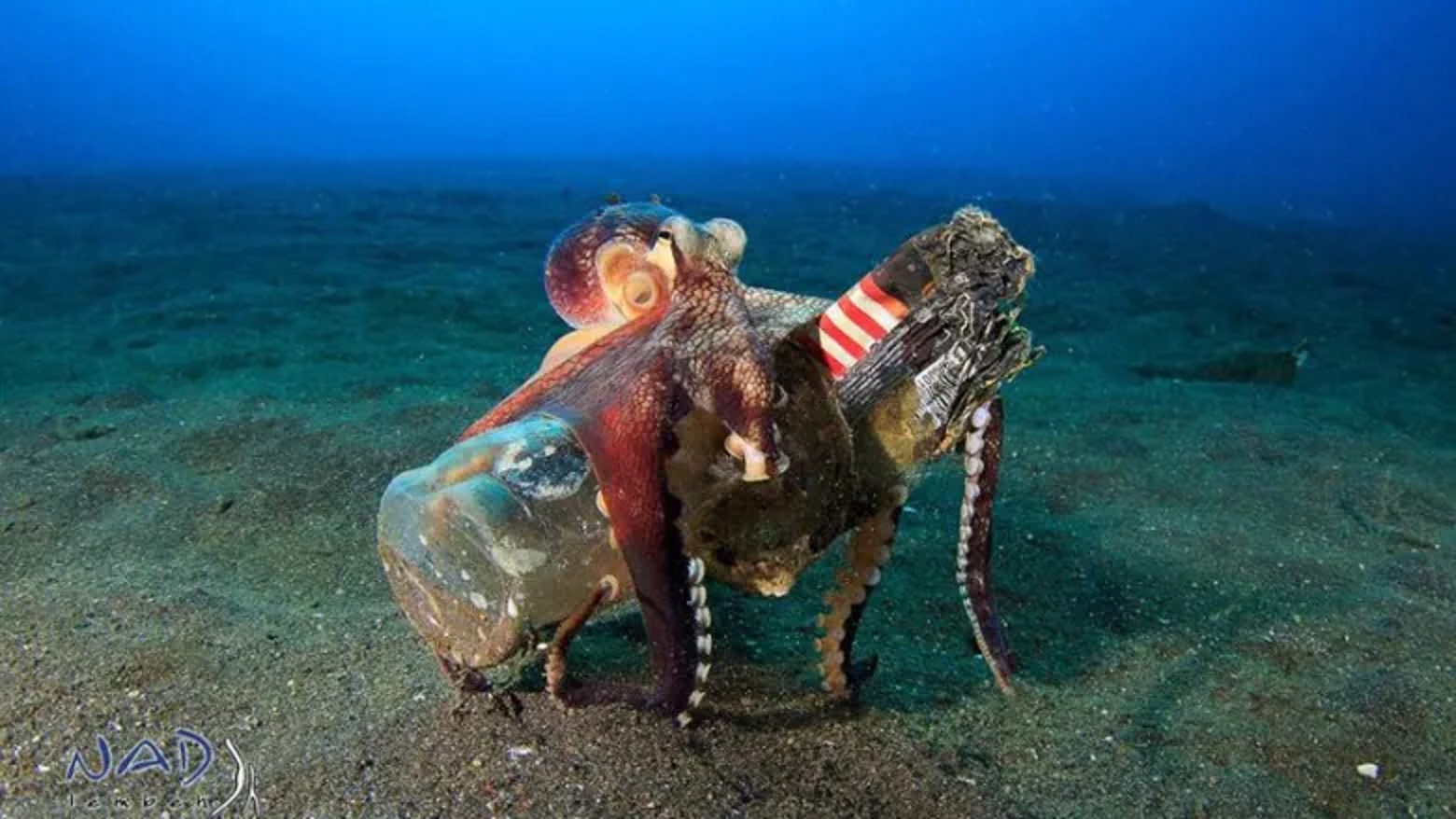
9 March 2022 (CBC Radio) – A new study suggests it’s becoming increasingly common for octopuses to use bottles, cans and other human trash to shelter themselves, camouflage their dens and even house their young.
“We believe this is because of the high abundance of these artificial items — you know, the litter item — in the ocean,” senior author Maira Proietti, an oceanographer from the Federal University of Rio Grande in Brazil, told As It Happens guest host Gillian Findlay.
“It’s becoming so common that they’re using these items to protect themselves with instead of their natural shelters, such as seashells, which are becoming scarce in the ocean.”
The findings are not surprising. Marine scientists and other people who work on the ocean have long observed octopuses taking up residence in sunken bottles and containers. In fact, those who study the creatures often use such objects to lure and capture them.
But the new study, published in last month’s Marine Pollution Bulletin, is the first to use crowdsourced photography to examine just how widespread the behaviour is.
Hundreds of crowdsourced photographs
The researchers — from the Federal Universities of Rio Grande, Santa Catarina and Pernambuco in Brazil and the University of Napoli in Italy — examined 261 photographs of 24 different species of octopuses interacting with ocean trash from around the world.
“Through these images, we observed that it’s very common for these benthic [deep-sea] octopuses to use artificial shelters instead of natural ones,” Proietti said.
Glass objects were present in 41.6 per cent of the photos, while plastic was observed in 24.7 per cent.
Earlier this month, the UN approved a landmark agreement to create the world’s first ever global plastic pollution treaty calling plastic in the world’s oceans “an epidemic.”
Some photos showed octopuses using the trash as makeshift shelters, or even using bits of garbage to camouflage their natural dens. Others showed females using litter to house their eggs.
Others, still, showed the creatures “stilt-walking” — using their tentacles to walk along the seabed — while clutching onto the various items they’ve collected.
“At first glance, it would seem like a positive thing because since they don’t have the natural shelters, at least they have some artificial ones to avoid predation and protect themselves,” Proietti. “But this could also be concerning.”
At least one octopus was pictured sheltering in a broken glass bottle, she said, which could lead to injury. In another case, an octopus was sheltering in an old car battery, which she says could emit chemicals that are dangerous to marine life. [more]
Octopuses are using human garbage as shelter, camouflage and more, study finds
In an octopus’s garden in the shade: Underwater image analysis of litter use by benthic octopuses
ABSTRACT: Benthic octopuses have been widely documented in artificial shelters for decades, and this use is apparently increasing. Despite any possible positive effects, the use of litter as shelter could have negative implications. In this work, we aimed to elucidate the interactions of octopuses with marine litter, identifying types of interactions and affected species and regions. To achieve this, we obtained 261 underwater images from ‘citizen science’ records, and identified 8 genera and 24 species of benthic octopuses interacting with litter. Glass objects were present in 41.6% of interactions, and plastic in 24.7%. Asia presented the highest number of images, and most records were from 2018 to 2021. Citizen science provided important evidence on octopus/marine litter interactions, highlighting its value and the need for more investigations on the subject. This information is fundamental to help prevent and mitigate the impacts of litter on octopuses, and identify knowledge gaps that require attention.
In an octopus’s garden in the shade: Underwater image analysis of litter use by benthic octopuses
